Do you love to decorate your home? Are you always following the latest trends in home decor?
If yes, starting a home decor blog can be a great way to share your passion with the world and even make money online in the process.
In this post, we’ll teach you how to start a home decor blog and make money online. We’ll give you tips on how to choose a blog niche, create a blog, come up with content ideas, drive traffic, and monetize.
By the end of this guide, you will have everything you need to start a successful home decor blog.
So let us jump right in.
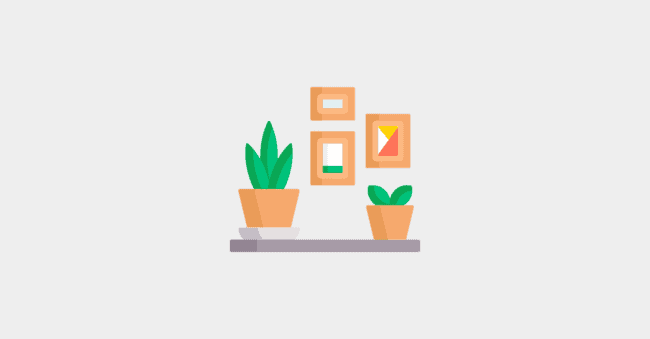
How to Start a Home Decor Blog in 7 Steps
- Define Your Home Decor Blogging Goals
- Choose a Home Decor Niche
- Pick & Register a Blog Domain Name
- Setup WordPress
- Write & Publish Blog Posts
- Promote Your Home Decor Blog
- Monetize & Make Money
1. Define Your Home Decor Blogging Goals
Before starting a home decor blog, it’s important to ask yourself why you want to start one in the first place.
Are you looking to share your love for interior design with the world?
Do you want to help others decorate their homes?
Or are you hoping to make money online through your blog?
If you are an interior designer, check out our guide on how to start an interior design blog.
What is a Home Decor Blog?
A home decor blog is a blog that shares tips and ideas on how to decorate a home. This can include anything from choosing the right furniture and paint colors to small DIY projects that can spruce up a home.
Why Start a Home Decor Blog?
If you’re passionate about interior design and love to decorate your home, starting a home decor blog is a great way to share your ideas with the world.
Not only is it a great creative outlet, but you can also help others who may be struggling with their own home decorating projects.
Plus, if you’re hoping to make money online, starting a home decor blog can be a great way to do that. There are several ways to monetize a home decor blog, which we will get into later in this post.
The benefits of starting a home decor blog include:
- Become an influencer in the home decor space
- Build a loyal following of readers who love your content
- Network with other bloggers and influencers in the home decor space.
- Build a community around your brand
- Make money online through advertising, affiliate marketing, and selling digital products
How much money can you make from home decor blogging?
You can make $15-$25 for every 1000 ad views on your home decor blog. An SEO optimized blog post can get anywhere between 300 to 1000 visits per month. So, a home decor blog with 100 blog posts can make as high as $2500 every month. You can make even more money if you monetize with affiliate marketing and digital products.
2. Choose a Home Decor Niche
When it comes to starting a home decor blog, one of the most important decisions you’ll make is choosing your niche. Your niche is the specific topic or area that your home decor blog will focus on.
For example, some home decor blogs focus on small DIY projects, while others may focus on eco-friendly home decorating tips.
Why choose a niche?
When starting any type of blog, it’s important to choose a niche so that you can narrow down your content and build a loyal following of readers who are interested in that specific topic.
If you try to cover too many topics on your home decor blog, you will likely end up with a scattered audience that is not engaged with your content. It is also difficult to rank in search engines if you cover a wide range of topics instead of focusing on a specific topic. By focusing on a specific niche, search engines like Google will know what your blog’s expertise is and will rank your content higher.
Finding Your Ideal Niche
To find your ideal niche, start by brainstorming a list of ideas.
- What are you passionate about when it comes to home decor?
- What do you have experience with?
- What do you feel confident writing about?
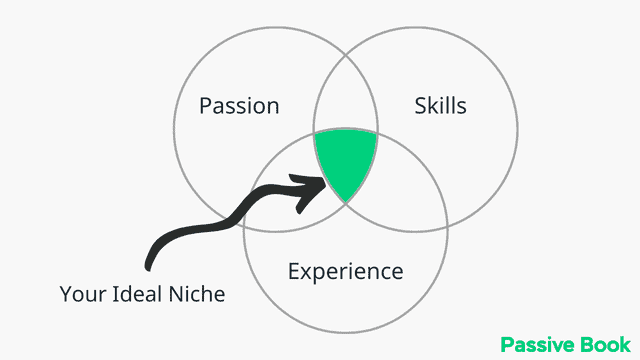
Once you have a list of ideas, it’s time to do some research.
Use Google search to find popular home decor blogs. What topics do they cover?
- What type of content do they share?
- Who is their target audience?
By doing this research, you’ll get a better idea of what’s already out there and it will help you narrow down your niche.
Here are a few home decor niches to help you find yours:
- Minimalism
- Small Living
- Budget Decor
- DIY
- Wellness Design
- Luxury Design
- Organization
- Kitchen Design
- Bathroom Design
- Japanese Style
- Mediterranean Style
Come up with a few niche ideas.
Examples of Home Decor Blog
Sometimes looking at other home decor blogs will help inspire ideas of your own. Here are some of the more popular examples of home decor blogs:
[auto-list-number] Centsational Style
This a blog by Kate Riley who is a lawyer turned design blogger. The designs shared in the blog might seem expensive but they are affordable for every budget.
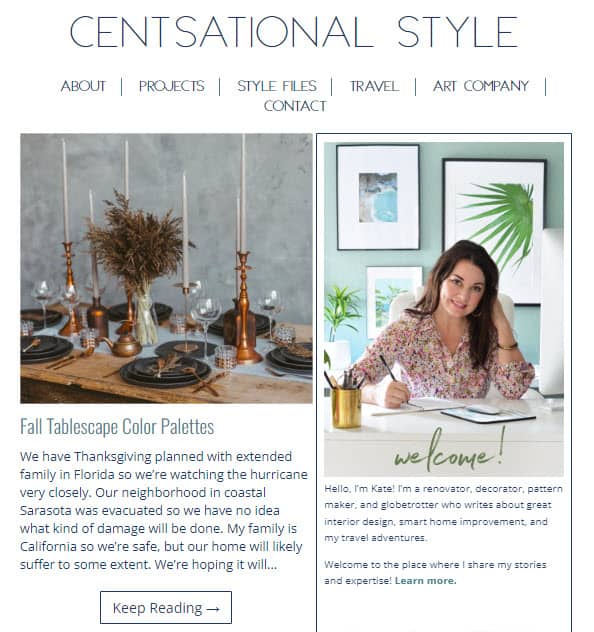
[auto-list-number] Design Sponge
Started in 2004 by Grace Bonney, Design Sponge is one of the most popular home decor blogs. It covers a wide variety of topics including Do-It-Yourself projects, how-to guides, and interviews with famous designers.
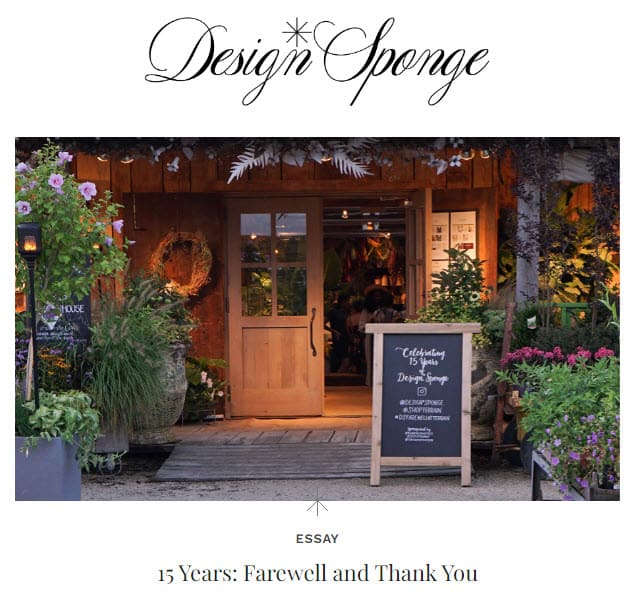
[auto-list-number] Apartment Therapy
This blog is run by Maxwell Ryan and focuses on helping people make the most of their small spaces. The blog covers a wide range of topics including how-to guides, product recommendations, and before & after tours.
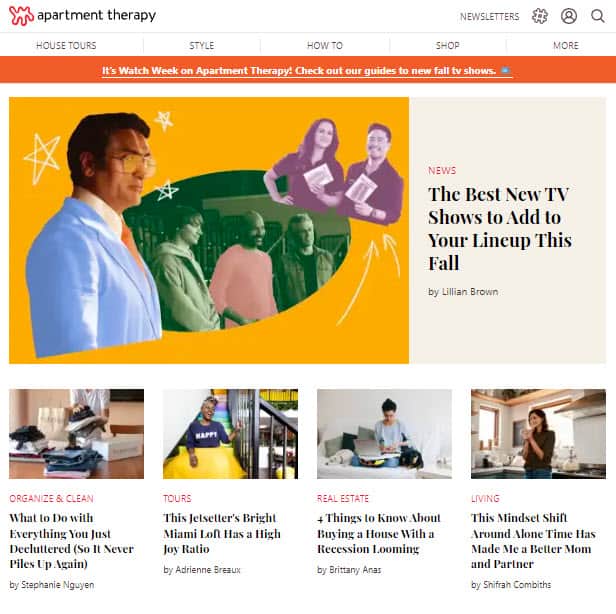
[auto-list-number] The Chronicles of Home
This blog is run by Jen who is a homemaker, decorator, and DIY lover. She shares her own furniture plans, decorating, and organizing tips.

[auto-list-number] BHG Live Better
This blog is run by the well-known brand, Better Homes & Gardens. The blog covers a wide range of topics including gardening, home improvement projects, and recipes.
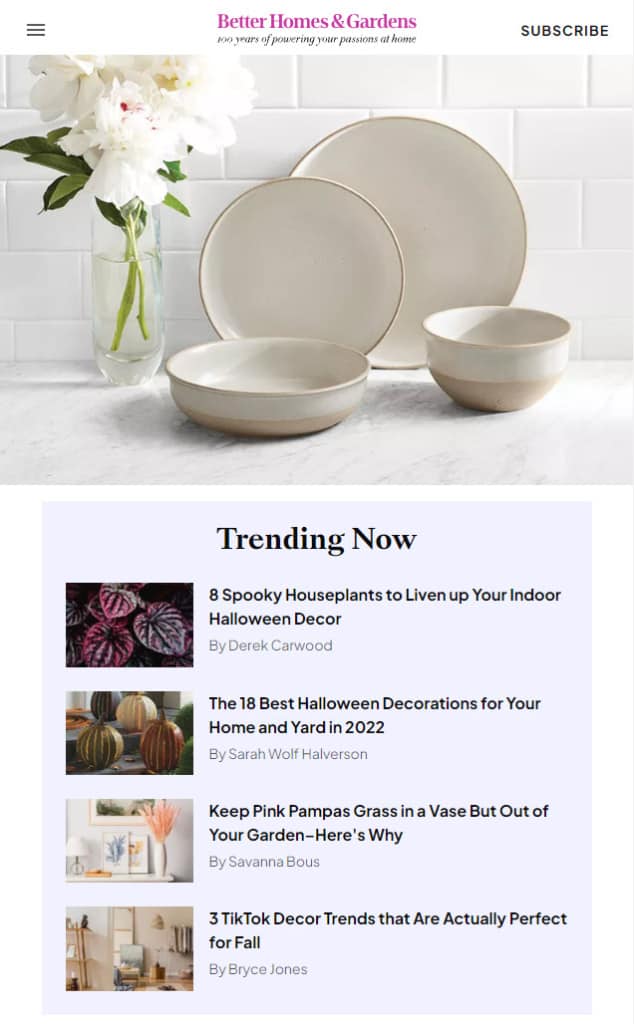
3. Pick & Register a Blog Domain Name
Once you have chosen your niche, it is time to brainstorm a few names for your home decor blog.
We recommend you keep your home decor blog’s name to two words (Example: Apartment Therapy). One of the two words should be a keyword from your niche. The other word can be something that makes your website brandable. For example, our blog teaches people how to make passive income, so we have named it Passive Book.
Here are some of the words that you can mix and match into your blog name:
- Design
- Home
- Style
- Space
- Apartment
- Decor
- Decorating
- Organizing
- Organize
- Interior
- Room
- Studio
Use a Business Name Generator to brainstorm the name of your blog.
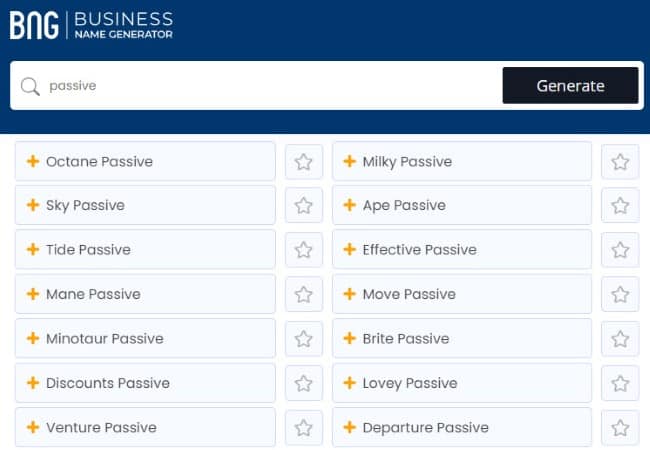
You can also use your own name for your blog. But if you ever plan to sell your website in the future, it is much more difficult to transfer your brand to the buyer when it is your name.
Check Domain Name Availability
After you have brainstormed a few names for your home decor blog, you should check if the .com domain name is available.
A domain name is the web address that people type into their browsers to visit your home decor blog. It is usually your home decor blog’s name followed by .com. For example, the domain name of this website is passivebook.com.
You must check if both the .com domain name and the social media handles are available. You can use Namechk to check the availability of both your domain name and social media handles.
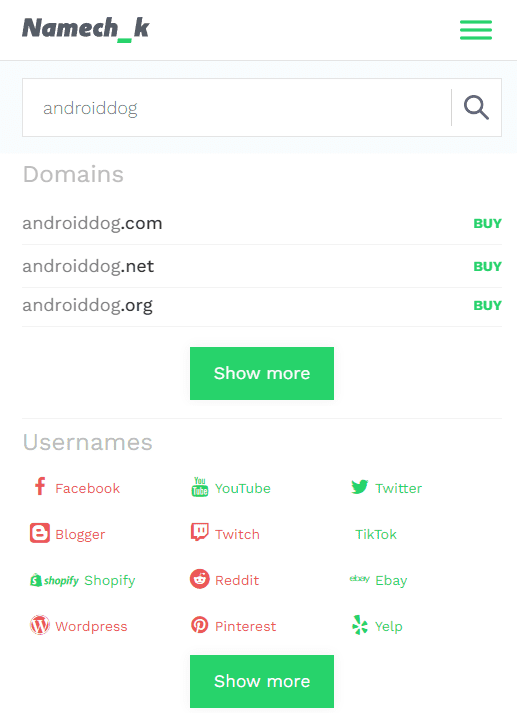
Here are a few things to keep in mind when selecting a domain name:
- Choose a .com domain name. 86% of the internet uses .com, so your visitors are likely to try visiting your blog by typing .com. Avoid other extensions like .net or .org.
- Don’t include hyphens and numbers.
- Do not use words with multiple spellings (for example colour vs color).
- Shorter domain names are better. Try to keep it under 12 characters.
- Spelling & Pronunciation should be easy and intuitive.
- It should be easy to remember.
- Avoid words that can be misread together. For example, therapistjohn.com can be read as Therapist John or The Rapist John.
- Make sure it’s not trademarked or copyrighted by someone else. The AI writing software Jarvis.ai had to rebrand to Jasper.ai because Marvel sued them for the Iron Man reference. Lawsuits will happen once your blog is established.
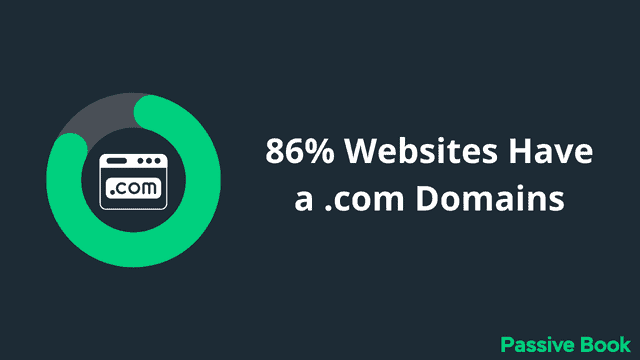
Register a Domain Name
Once you decide your domain name it is time to register it.
You should register your domain with NameCheap because you will get domain privacy for free. Other providers charge $12 per year for domain privacy. Without domain privacy, your name, home & email address will be accessible to the public.
Step 1: Go to NameCheap. Enter your domain name with the .com extension.
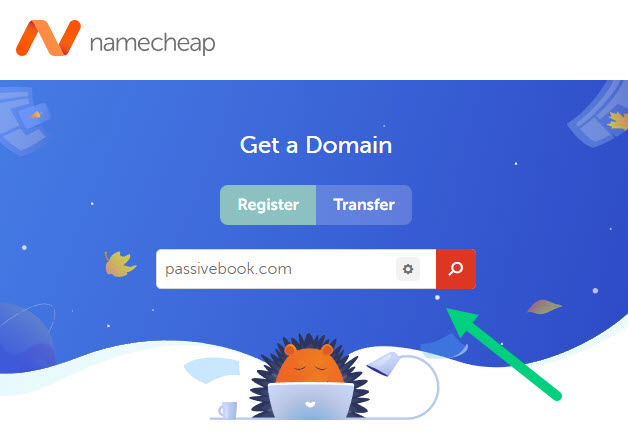
Step 2: Select the .com extension and click the Add to Cart button.
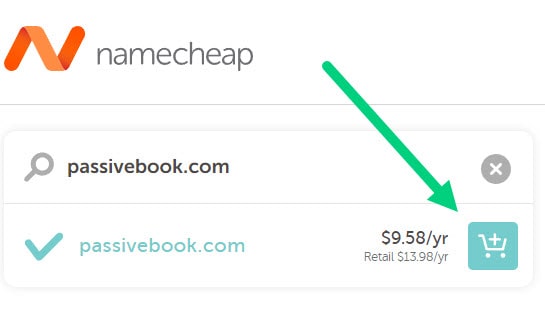
Step 3: After adding the domain to the cart, click on the Checkout button.
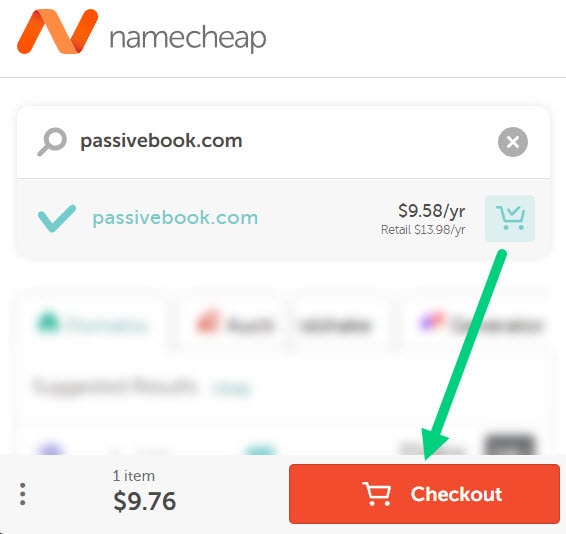
Step 4: Enable Domain Privacy that comes for free along with auto-renew. You don’t need any other paid addon.
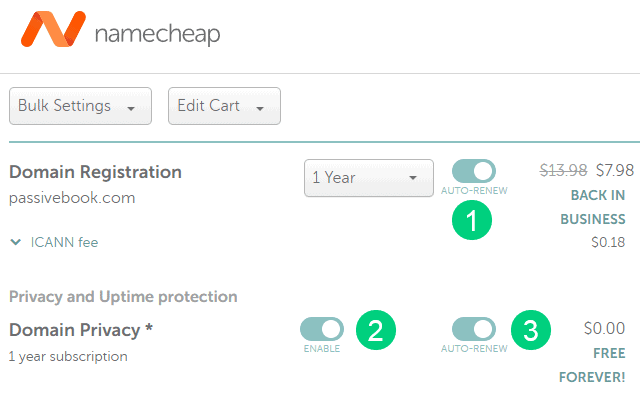
Step 5: Click on Confirm Order. Pay to complete your purchase.

Step 6: Log in to Namecheap and click on Domain List ❶ in the left sidebar and then click Manage ❷ next to the domain you just purchased.
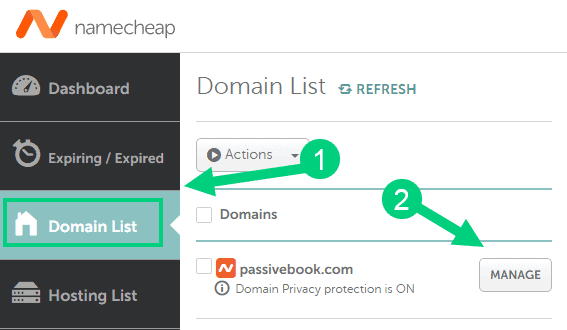
Step 7: Under the Nameservers section, select “Custom DNS” from the dropdown ❶. Then enter the following two nameservers ❷ ns1.bluehost.com and ns2.bluehost.com as shown in the image. Then click the green tick ❸ to save. If you use a hosting provider other than Bluehost, enter their nameserver values in this step instead.
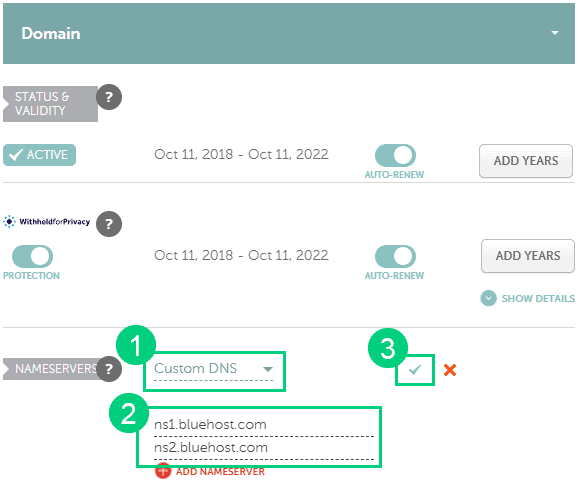
Can I get a free domain name?
Your web hosting provider might give you a free domain name for one year but they charge $12 for domain privacy which is free in Namecheap. From the second year, you will pay for both the domain and privacy which will cost you more than $20+. So it is cheaper to just register your domain with Namecheap from the beginning. Also using different companies for web hosting and domain registration will allow you to easily switch your blog host later without transferring domains.
Can I change the name of my blog later?
You will lose your search engine rankings if you change your blog’s name once it gets links from other websites. It will take as long as a year or more for you to regain the lost traffic. It is possible to mitigate problems by having proper redirects. But you will have to renew both your old and new domains every year. So try to avoid changing your blog’s name once it is established.
4. Setup WordPress
The next step is to get your blog up and running in WordPress.
WordPress is a content management system (CMS) that makes it easy to create a home decor blog from scratch without learning how to code.
Why Choose WordPress.org?
There are many blogging platforms but the self-hosted wordpress.org powers 70% of blogs on the internet. 42% of all websites on the internet use WordPress.

We recommend you use WordPress.org because it gives you more control over how your home decor blog looks and how you want to monetize your blog in the future. You will own your content, and you can monetize and make money from your blog without any limitations.
WordPress.org vs WordPress.com
There are two versions of WordPress: self-hosted wordpress.org and wordpress.com.
WordPress.com is a freemium platform (free + premium) where the free version has limited features and customization options. If you want to do more with your blog, you will need to upgrade to the premium plans which can be quite expensive.
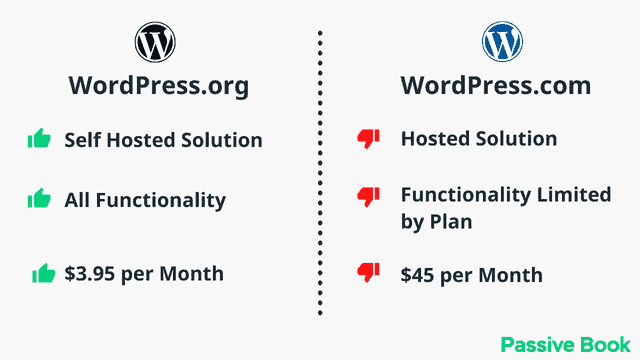
On the other hand, with WordPress.org, you will need to get your own hosting and domain name which is very inexpensive. In return, you will get unlimited access to all the features that WordPress has to offer.
Why Avoid Free Blogging Platforms
There are many free blogging platforms but we do not recommend them because they limit how you can monetize your blog. With WordPress.org, you can make money in many ways such as advertising, affiliate marketing, and selling digital products.
On the other hand, with free blogging platforms like Blogger or Medium, you give up control of how you monetize your blog. For example, WordPress.com and Wix, can put their advertisements on your articles and keep all the revenue for themselves.
All free platforms rank poorly in search engines and your blog’s traffic and growth potential will be severely limited.
Your blog can also get deleted overnight without any warning and you don’t own the content on your blog.

How much does it cost to start a home decor blog?
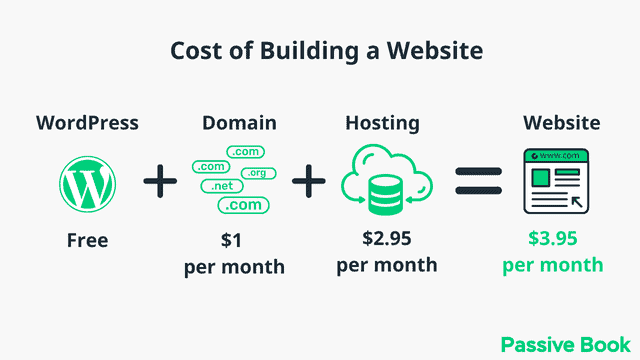
It will cost you $2.95 per month to host your WordPress home decor blog in Bluehost. A domain will cost you $12/year. So that is a total of $4.2 per month, which is less than the price of Netflix for all the unlimited features that a self-hosted WordPress blog has to offer.
What to do if you already have a free blog?
If you’re currently blogging on a free platform like Blogger or Medium, it’s easy to migrate to WordPress using one of the many WordPress import plugins available. These plugins will automatically move all your posts, comments, and images from your old blog to your new WordPress site.
Install WordPress in Hosting
Before you can install WordPress and set up your home decor blog, you need to get your hosting set up.
Hosting is a service that provides the server space to store the blog posts, files, and images of your home decor blog.
When someone visits your home decor blog in a browser like Chrome or Firefox, your web host will load files from their server into your visitor’s browser, allowing them to access your home decor blog.
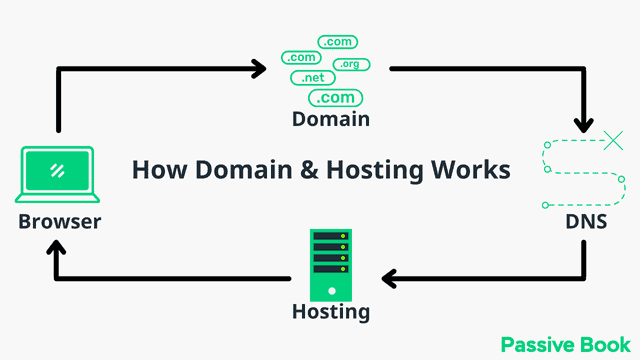
For this guide, we will use BlueHost as our web host. It is a cheap hosting that is extremely easy for beginners to set up. If you use any other web host, the steps will be the same but the user interface may be slightly different.
1. Go to BlueHost using this link to get a special discount. Select WordPress > WordPress Hosting from the top menu.
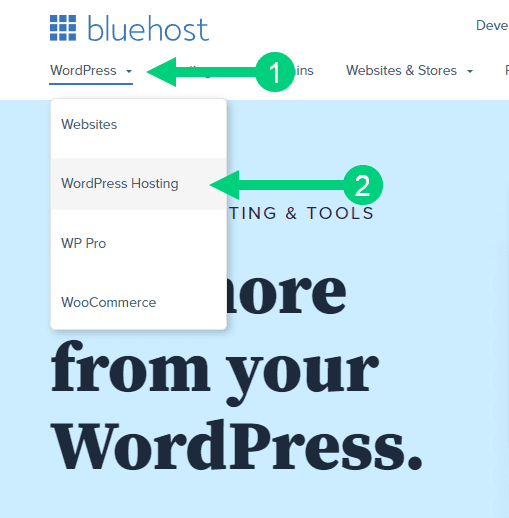
2. Click on the button you see on this page and you will be taken to the pricing section.
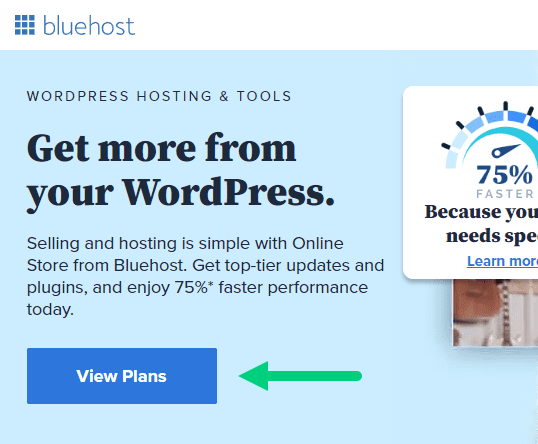
3. Select the Basic Plan. You can upgrade to a different hosting plan as you grow.

4. If you already have a domain name that you purchased with Namecheap you can put that in the “Use a domain you own” ❶ section. If you don’t have a domain name yet, choose the “Create a New Domain” ❷ to purchase a new domain.
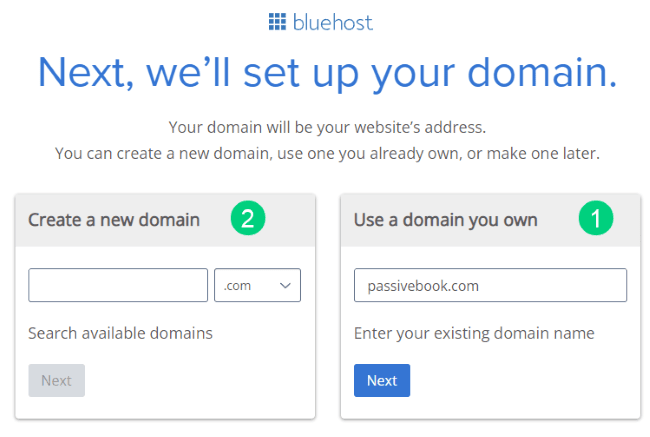
5. In the next screen, enter your information. Uncheck all package extras. If you purchase your domain through Bluehost instead of Namecheap, you may want to enable Domain Privacy. You won’t see the Domain Privacy option if you bought your domain through Namecheap. Namecheap will give you this Domain Privacy for free.
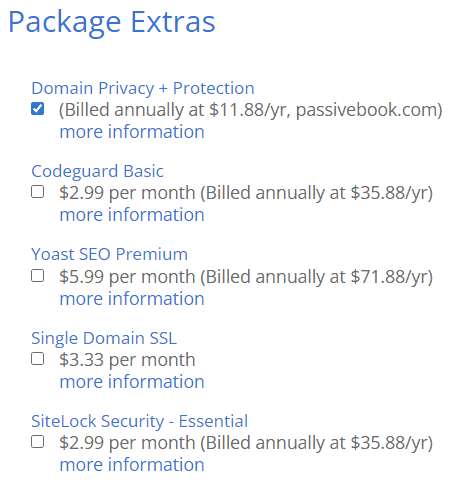
6. Once you have successfully paid, you will be prompted to set a password. Click on the “Create your Password” button.
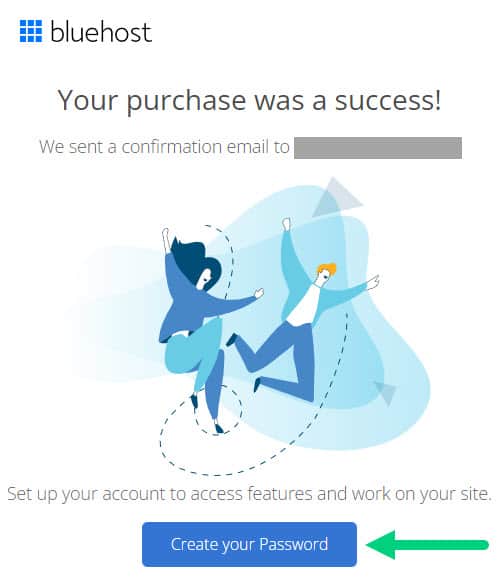
7. Enter your password and create your account. If you lose this password, you can reset it.
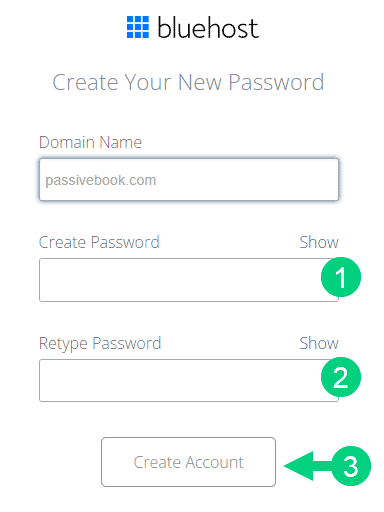
8. After you set your password, log in to Bluehost.
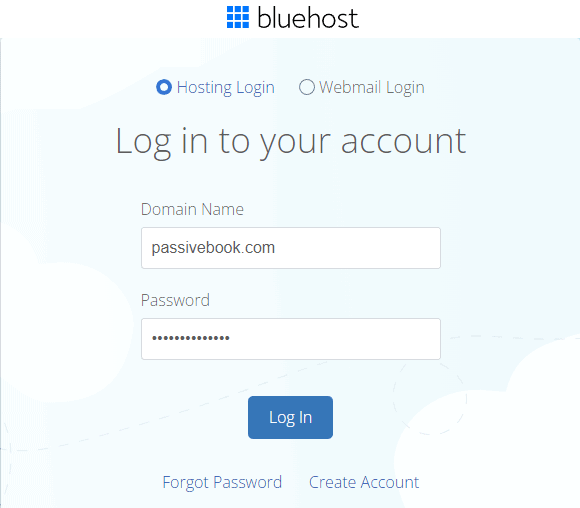
9. Click on the Create your website button on the following screen. This will start a Bluehost Wizard, just click Skip this step wherever possible.

10. On the following page, click “No help needed” or “Skip this step”. We don’t want Bluehost to limit our customization options.
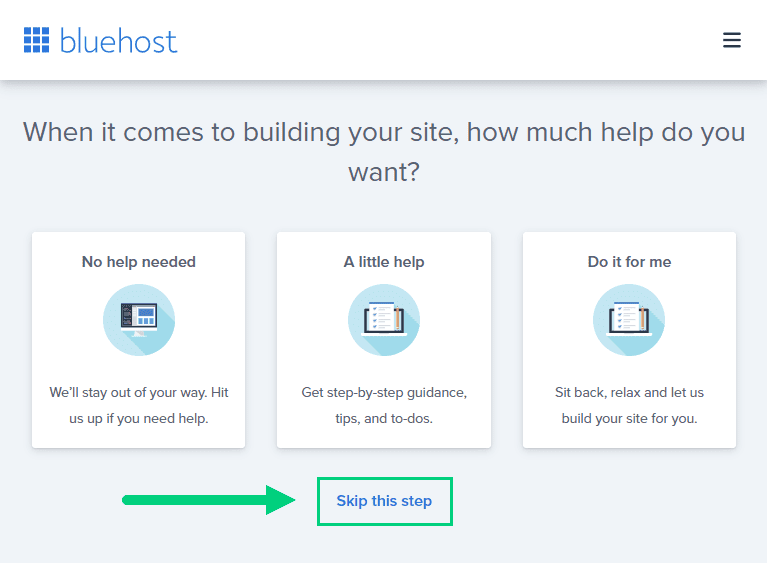
11. On the next page, you will be asked about the purpose of your website. You can choose from any of the available options.
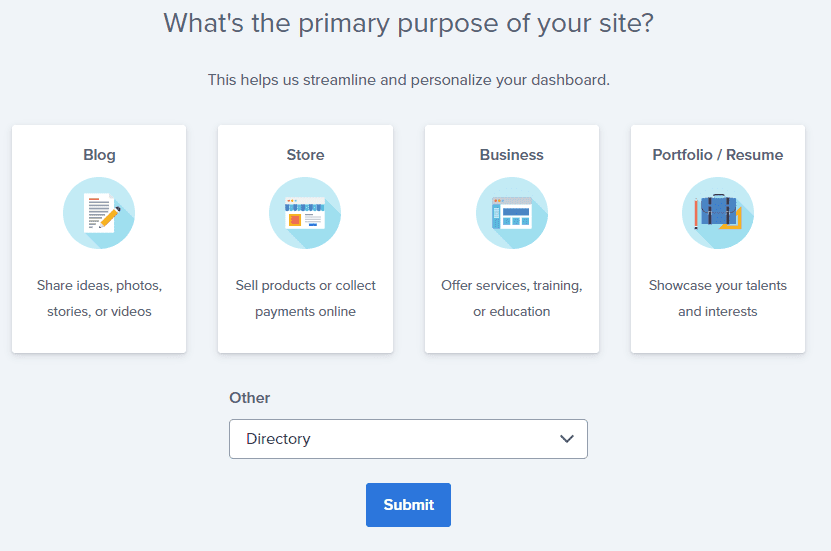
12. On the next page, click Skip this step.
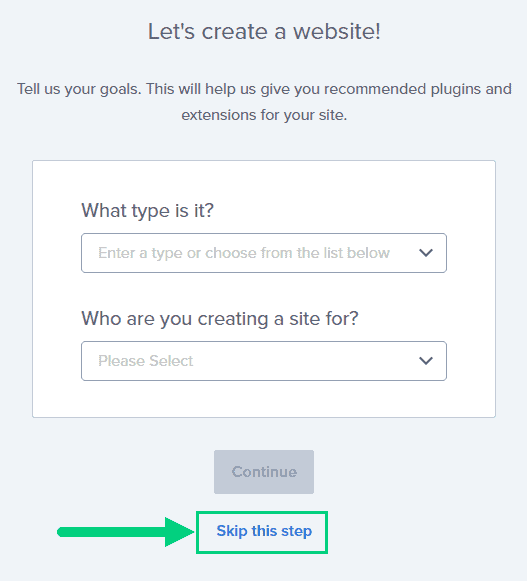
13. On the following page, enter the blog’s name and tagline. You can change this later so feel free to click “Skip this step” or enter something as a placeholder and click Continue.
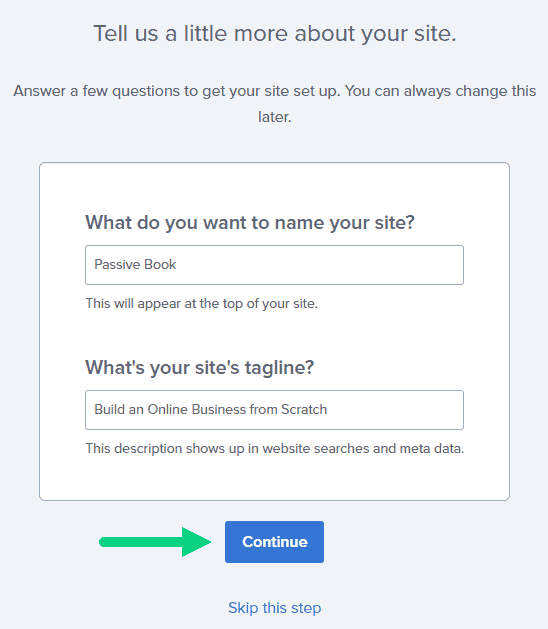
14. Finally you will be asked how you want to build your website. Choose “Limitless customization” to have all the options.

15. You can see your blog by going to yourdomain.com. Go to the Bluehost dashboard and click on the My Sites tab ❶ in the left sidebar and click on the “Manage site” button ❷.
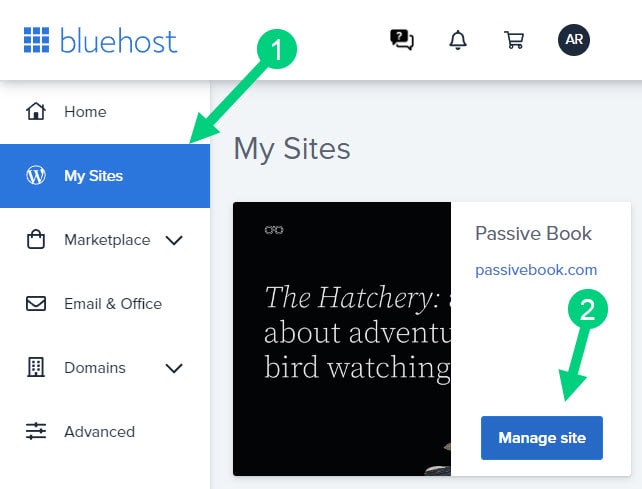
16. Your WordPress site has separate login credentials different from the ones you use to log into Bluehost. You can use this to log in to the WordPress dashboard directly without logging into Bluehost. To get this:
❶ Click on Users on top.
❷ You will be able to see your username and email that you can use to log in to WordPress.
❸ If you click on the three dots you will see the option to Reset your password. ❹
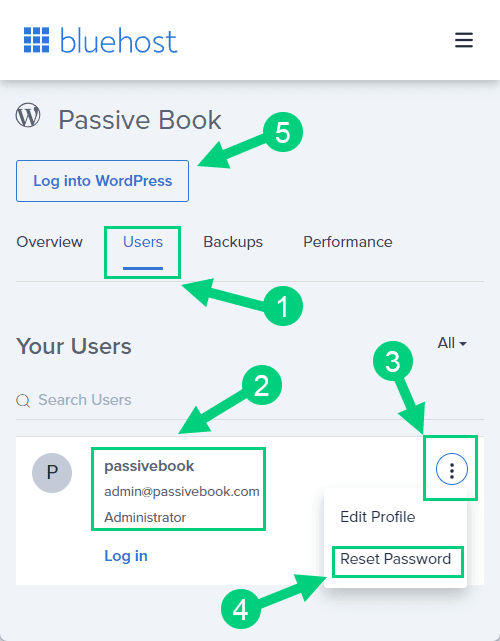
You can log into WordPress from the Bluehost dashboard by clicking the Log in to WordPress button ❺. But it is not recommended you rely on this as your primary login method because you will get locked out of your site if you ever change hosting providers.
17. You will be taken to the WordPress dashboard where you can reset your password ❶. If you don’t like the username Bluehost created for you, you can Add a New User ❷.

18. If you are adding a new user make sure you specify the user role as Administrator ❶. You can log in as the new user and safely delete the default user created by Bluehost.
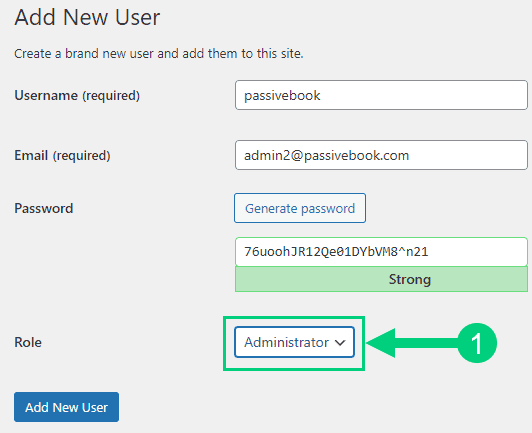
Congratulations! You have successfully set up WordPress.
Configure WordPress
Now that you have the basic version of WordPress installed, it is time to customize it to make it look and feel the way you want.
Login to WordPress Dashboard
The WordPress Dashboard is the area where you will manage all the aspects of your home decor blog. It includes tools to write and publish posts, add pages, configure settings, manage comments, and more.
Visit yourdomain.com/wp-admin to access the WordPress dashboard.
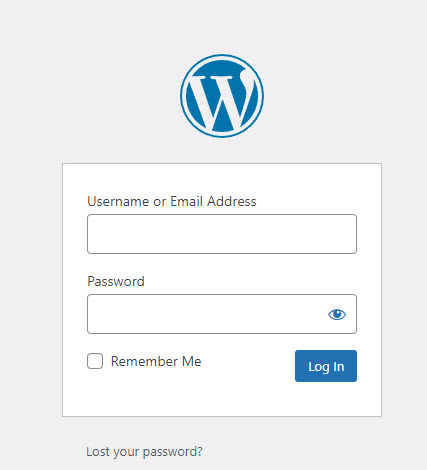
Use the Email and Password you provided during installation to log in to your WordPress dashboard. If you don’t have a password, use the “Lost your password?” to generate a new password.
Install WP Themes
A WordPress theme is a collection of files that work together to create the design of a WordPress site. You will be able to customize the look and feel of your WordPress blog without learning how to code.
Your new WordPress blog will be installed with a default blog theme that doesn’t look very great.
To install a new WordPress Theme:
Go to Appearance > Themes > Add New in your WordPress dashboard.
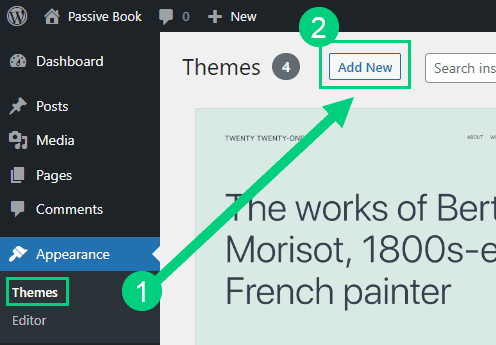
Use the search to find a theme that you like ❶. Before you install the theme, you can see a demo of the theme and learn about its features from the preview screen ❷. If you like the theme, you can install it by clicking the install button ❸. You can also upload a theme from a file on your computer ❹.
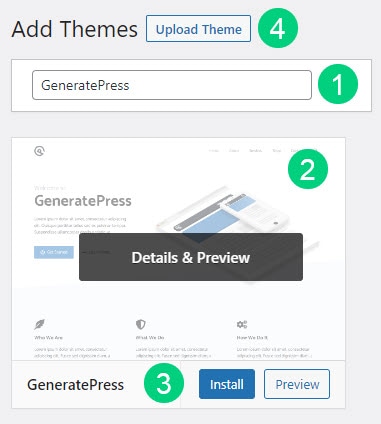
Once installed, click the Activate button to enable the theme.
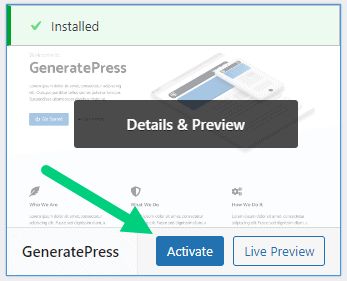
Although you can use a free theme (there are thousands of free themes available), we recommend using a premium theme.
Premium themes not only reduce your website’s load time but also help you customize your website to your heart’s desire.
Here are the premium themes we recommend:
There are also several custom-made home decor blog themes. These themes tend to be bloated with poor code which will slow down the performance of your website. We suggest getting one of our recommended themes for a fast website with unlimited customization possibilities.
Install WP Plugins
A WordPress plugin is a software application that adds features and functionality to WordPress. There are thousands of free and premium WordPress plugins available for you to install on your home decor blog.
WordPress plugins will extend the functionality of your blog.
Too many wordpress plugins can slow down your blog site. So before you install new plugins, it will be worth clearing out any existing plugins that your hosting provider installed by default.
Plugins first need to be deactivated before they can be deleted.
❶ Go to WP Admin > Plugins > Installed Plugins
❷ Click on the checkbox to select all plugins.
❸ Select Deactivate from the drop-down.
❹ Click Apply.
❺ Repeat the above steps but select “Delete” instead of “Deactivate” from the dropdown in ❸ to delete all the deactivated plugins.
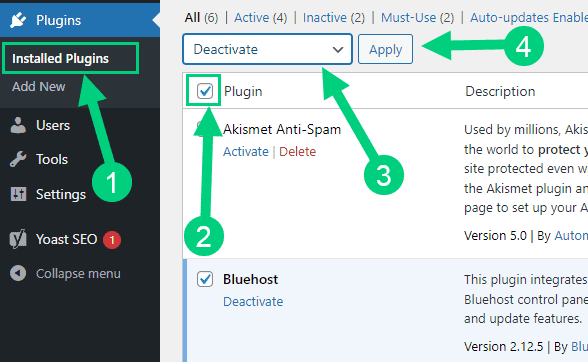
To install new plugins go to the WP Admin > Plugins > Add New.
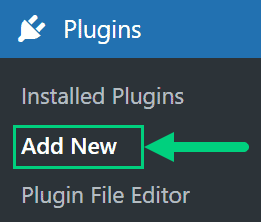
On the plugins page:
❶ Search for the plugin you want in the search bar
❷ Click Install Now. Once you install the plugin, you must also activate the plugin for it to be enabled.
❸ If you are installing a paid plugin you can upload the plugin instead.
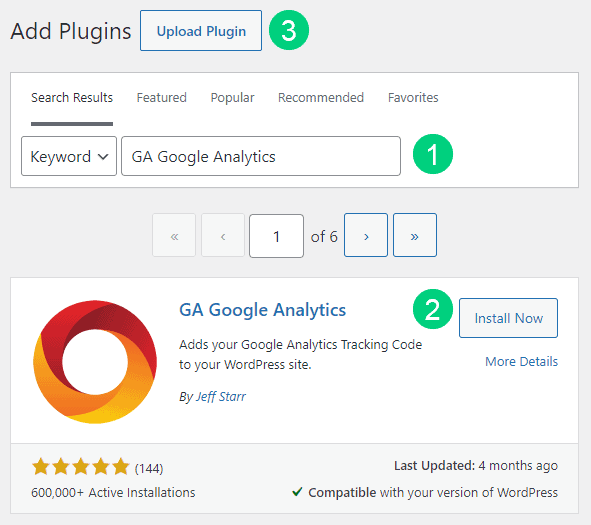
There are many different home decor blog plugins that you can install, but here are the ones which we recommend:
Backup Plugin: A WordPress backup plugin helps you create and store backups of your WordPress site. It can help you recover your site if something goes wrong.
Recommended Plugin: WPVivid (paid) or UpdraftPlus (free).
SEO Plugin: WordPress SEO plugins improve the visibility and ranking of your home decor blog on search engines like Google, Yahoo!, and Bing. They do this by providing you with tools to optimize your website for search engines, such as the ability to add metadata, titles, and descriptions to your posts and pages.
Recommended Plugin: RankMath Pro (paid).
Google Analytics Plugin: A WordPress Google Analytics Plugin helps you collect and view website analytics data for your home decor blog from within your WordPress dashboard.
Recommended Plugin: RankMath Pro (paid) or GA Google Analytics (free).
Cache Plugin: A WordPress cache plugin improves the performance of your website by caching your website’s pages and posts. This means that when a visitor visits your website, the pages and posts will be served from the cache instead of from your server, which will improve the speed of your website.
Recommended Plugin: WP Rocket (paid).
Page Builder Plugin: A WordPress page builder plugin helps you create custom pages and posts for your home decor blog without having to learn how to code. It can help you save time and money by not having to hire a developer to create custom pages for you.
Recommended Plugin: Thrive Architect (paid).
Security Plugin: A WordPress security plugin helps you secure your home decor blog from hackers and other security threats. It can help you prevent your site from being hacked or compromised, which can result in the loss of data or money.
Recommended Plugin: Wordfence (free).
Social Media Plugin: A WordPress social share plugin helps your readers share your home decor blog posts on social media networks like Facebook, Twitter, and LinkedIn. It can help you reach a larger audience and drive more traffic to your blog.
Recommended Plugin: Easy Social Share Buttons (paid).
Email List & Lead Generation Plugin: A WordPress Email Opt-in Form Plugin helps you collect the email addresses of your visitors so that you can send them marketing emails. You can use it to grow your email list, which can result in more sales and conversions for your home decor blog.
Recommended Plugin: Thrive Leads (paid).
Customize WordPress
Once you have installed your theme and plugins, it is time to customize the wordpress blog platform:
Change Colors, Fonts & Spacing
You can set the font, colors, and spacing by going to Appearance > Customize in your WordPress dashboard. Premium themes like GeneratePress allow you to customize every aspect of your blog.

Check out our Blog Fonts & Typography guide to choose the right font and typography settings for your blog.
Add Your Logo
Get a logo designed for your blog from Fiverr. Then set the logo of your blog by going to Appearance > Customize in your WordPress dashboard. A logo is not required for a successful blog but it can definitely help appeal to your target audience.
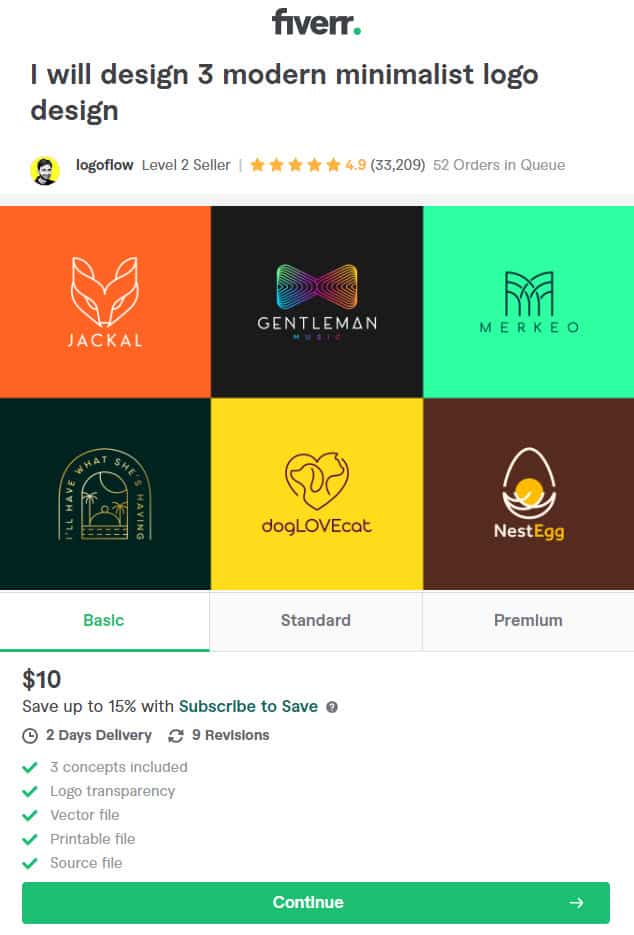
Change Favicon
Favicon is the image that appears in the browser tab and bookmarks. Set the Favicon from the Appearance > Customize section of the WordPress dashboard.

Create Menus
The header and the footer menu can be set from the Appearance > Menus in your WordPress blog dashboard.
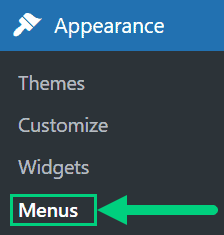
You can nest menu items so that it appears as a dropdown menu ❶. You can use the menu as your primary or secondary navigation menu ❷. Don’t forget to save your menu ❸.
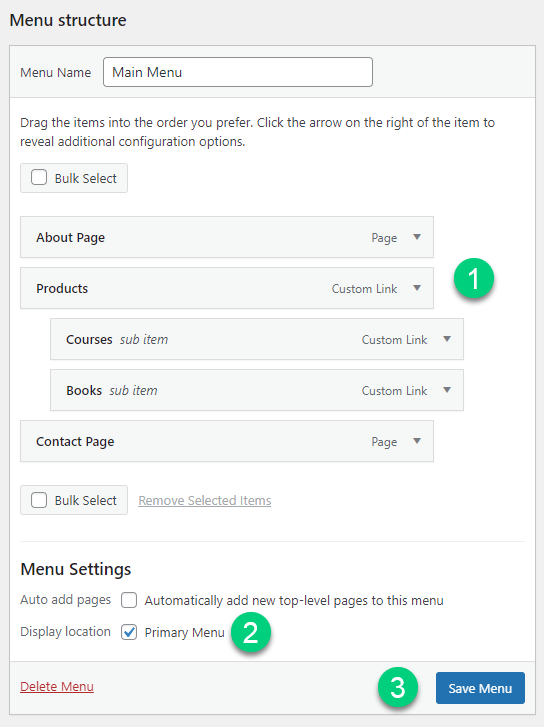
Create Widgets
If you have a sidebar, you can add widgets to it. Go to Appearance > Widgets in your WordPress admin dashboard.
Check out the list of the most useful Blog Widgets and how to add them to your blog.

Set Title & Tag Line
The next step is to change your General Settings. Go to Settings > General in the WordPress Admin area.
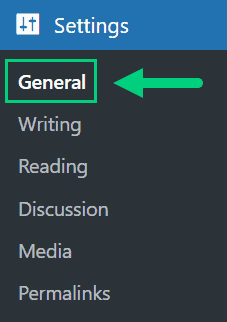
You can set your Site Title, Tagline, and Time Zone from this screen.
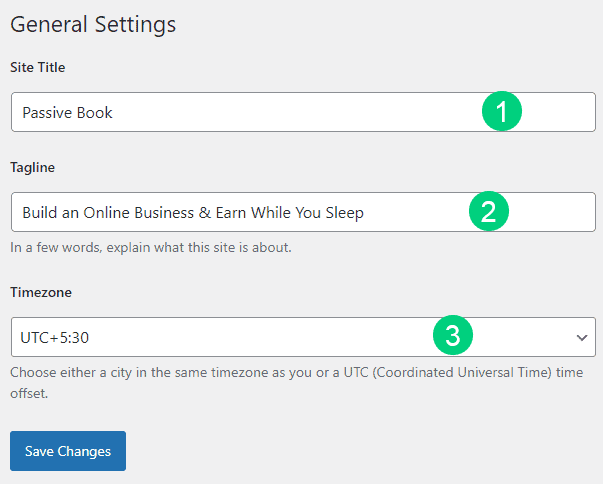
Set Permalinks
The ideal URL structure for SEO is yourdomain.com/sample-post. Set your permalink structure by going to Settings > Permalinks in your WordPress blog dashboard.

Select the “Post name” radio button and save changes.
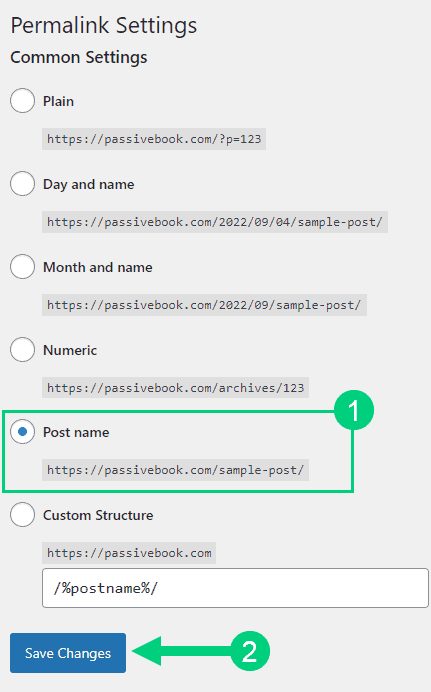
Enable Search Visibility
Chances are you want your blog to show up on Google so people can find you. Go to Settings > Reading in your WordPress dashboard.
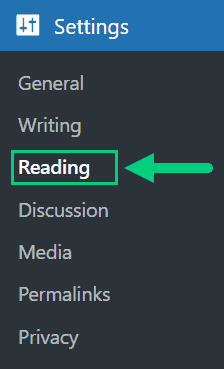
To get search engine traffic, ensure the checkbox “Disable search engines from indexing this site” is Unchecked. You can find this option in Settings > Reading. Most of the time this should be unchecked by default but if it is not, then uncheck it to ensure your site gets traffic from search engines.
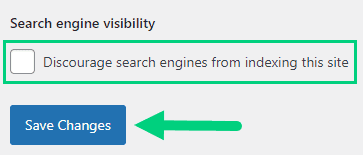
Adjust Comment Settings
Next, you will want to change the Discussion Setting (aka Comments). Go to Settings > Discussion in your WordPress admin area.
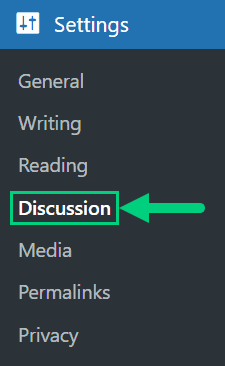
❶ You may want to enable or disable comments on this page. You can also disable pingbacks and enable comment moderation.
❷ You can also set comment approval settings.
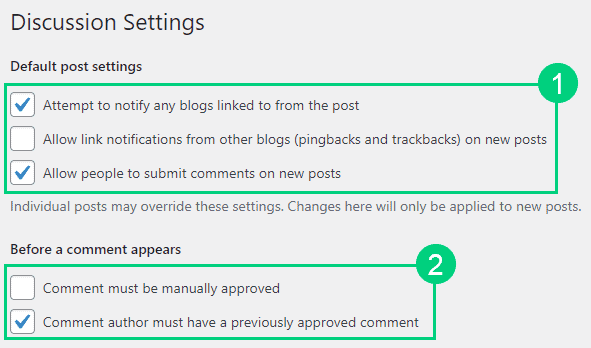
If you want to design your blog further, check out our dedicated guide on blog design which has all our best blog design recommendations.
Create Static Pages
There are a few essential pages that you need to create for your home decor blog before you can start blogging.
Use pages in WordPress to add static content. Go to WP Dashboard > Pages > Add New.
- Write the headline of your content.
- Populate the body content
- Click the publish button.
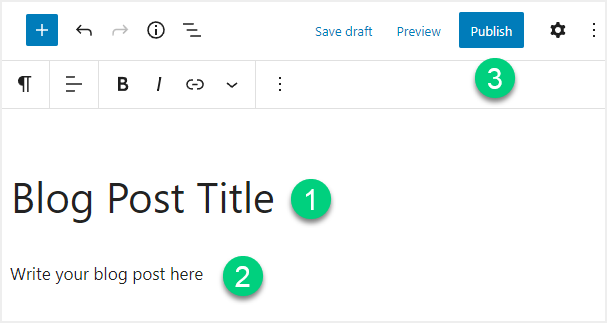
You may want to create the following pages:
Home Page
A home page is the main page of a website. It is typically the first page that visitors will see when they arrive at a website. The home page can be used to provide information about a website or businesses, as well as direct visitors to other pages on the site.
Your home page should include the following information:
- The name of your home decor blog
- The purpose of your blog (i.e. to provide inspiration and tips for decorating your home)
- A brief bio about you (i.e. who you are, what you do, etc.)
- A list
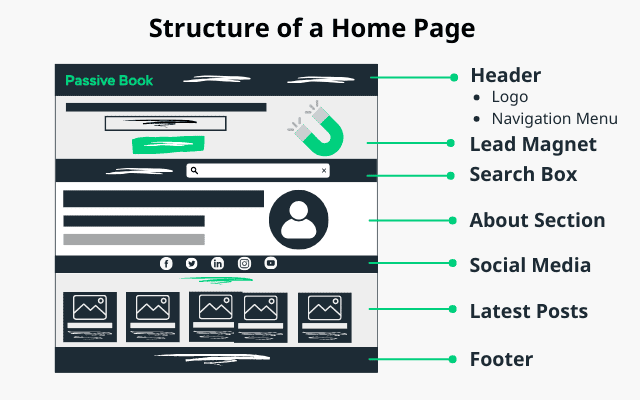
You can create a professional home page for your home decor blog using a page builder like Thrive Architect.
About Page
An about page is a page on a website that provides information about the website or business. The About page can be used to provide information about the owner or creator of the website, as well as the purpose of the website.
Your About page should include the following information:
- Who you are
- What you do
- Why you created your home decor blog
- What you hope to achieve with your blog
- A photo of you
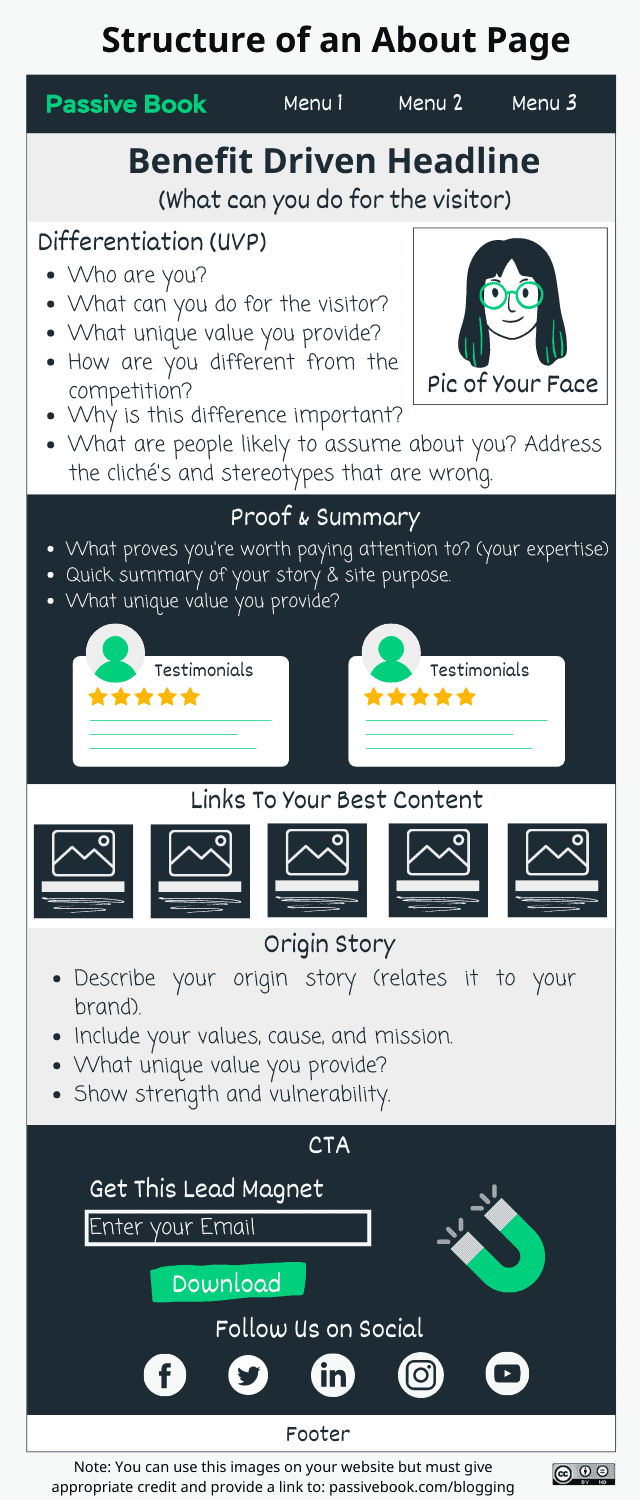
Contact Page
A contact page is a page on a website that provides information on how to contact the owner or creator of the website. The contact page can be used to provide an email address, phone number, or mailing address.
Your contact page should include the following information:
- Your email address
- Your phone number
- Your mailing address
Use contact form plugins like Fluent Forms to create the form on your contact page.
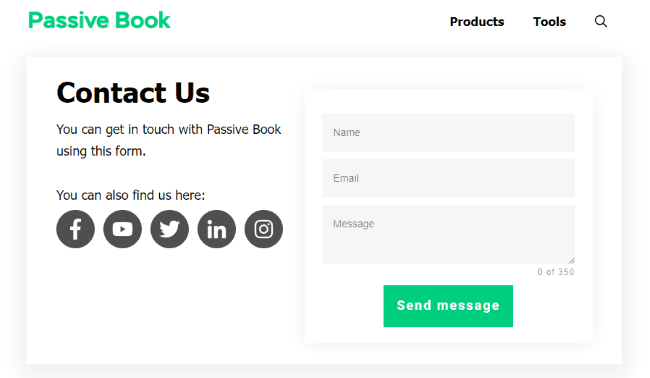
Privacy Policy
A privacy policy page is a page on a website that provides information on how the website collects, uses, and discloses personal information. The privacy policy page can be used to inform visitors of how their personal information will be used and to obtain their consent for the use of their personal information.
Your privacy policy page should include the following information:
- What personal information is collected
- How the personal information is used
- With whom the personal information is shared
- How personal information is protected
WordPress generates its own privacy policy for you. But you can also use a tool like Termly to generate your own privacy policy.
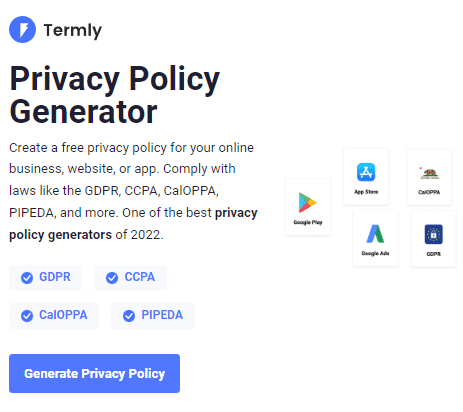
Terms of Service
A terms of service page is a page on a website that provides information on the terms and conditions under which visitors may use the website. The terms of service page can be used to inform visitors of the rules that they must follow when using the website.
Use a terms & conditions generator like Termly to create it.
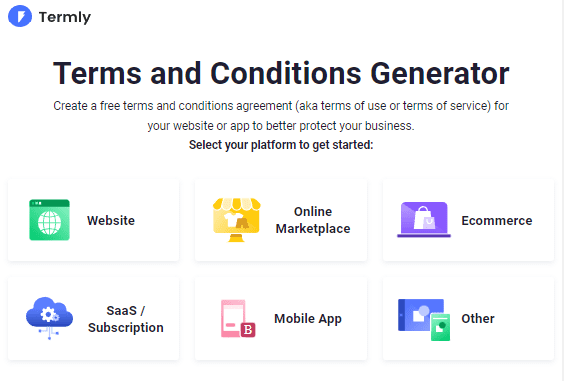
5. Write & Publish Blog Posts
Now that you have your home decor blog set up, it’s time to write and publish your first blog post. To craft the perfect blog post, check out our in-depth guide on How to Write A Blog Post. Here we will go over specific tips for a home decor blog.
1. Brainstorm Topics
You should brainstorm 100 topic ideas for your home decor blog. This will ensure that you always have content to write about in your home decor blog.
The goal is to find topics for your home decor blog that your audience is searching for in Google. The type of content you write on your home decor blog will depend on your specific niche.
Here are a few home decor blog post ideas, you can potentially cover in your home decor blog:
- How-To Guides
- List Posts
- Reviews
There are a few ways to brainstorm specific content:
Look at Competitors
Looking at your competitor’s blog posts is a great way to come up with ideas for your own blog. You can see what topics they are writing about, how they are formatting their posts, and what type of content is resonating with their audience. This information can help you brainstorm ideas for your own blog posts and give you a better understanding of your audience.
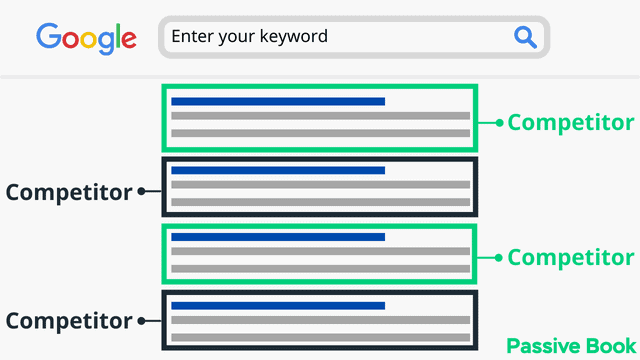
Do Keyword Research
You can use a keyword research tool like KeywordTool.io to find blog topic ideas.
Just enter a keyword into the tool and the tool will then generate a list of related keywords. From there, you can select the keywords that are most relevant to your home decor blog and add them to your brainstorming list.
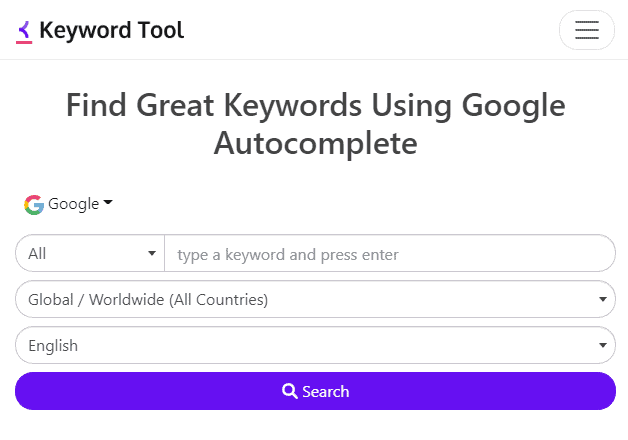
Community & Forums
Looking for ideas in forums and online communities is a great way to find potential topics for your blog. You can search for forums related to your niche and see what people are talking about. This can give you some great ideas for blog posts that you can write.
2. Create an Editorial Calendar
Once you have a list of potential topics for your home decor blog, it’s time to create an editorial calendar.
An editorial calendar is a tool that bloggers use to plan and organize their content. The editorial calendar can be used to track the topics of the blog posts, the due date of the blog posts, and the status of the blog posts.
An editorial calendar should include the following information:
- Topic of the blog post
- Date the blog post is due
- Status of the blog post (planned, in progress, published)
- Author of the blog post
Download Content Calendar Template

Steal our exclusive content calendar template. Have it delivered directly to your inbox:
There are a few different ways to create an editorial calendar. You can use a spreadsheet like Google Sheets or Excel. You can also use a Kanban board like Trello or Notion.
3. Write a Blog Post
Once you have selected a topic for your home decor blog post, it’s time to start writing the post.
When writing a blog post, there are a few things you should keep in mind:
- Write for your audience first, not for search engines
- Keep your paragraphs short
- Use images and videos
- Use headings and subheadings
- Use bullet points
- Optimize your blog post for SEO
We will look at how to write specific types of articles next.
DIY Projects & Tutorials
This type of post would provide step-by-step instructions and tips for readers who want to tackle home decor projects on their own.
Some examples of post titles are:
- “DIY Headboard from Old Shutters”
- “Step by Step Tutorial: How to Paint a Room Like a Pro”
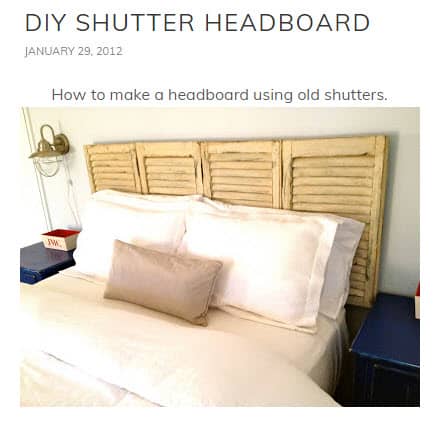
Be as detailed and specific as possible in your instructions, and include high-quality images or videos to help readers understand the process. List any tools or materials that will be required, and include tips for troubleshooting any potential problems that may arise. Also consider including the estimated time and costs to complete the project, and provide alternatives or different approaches.
Room Makeovers & Transformations
This type of post would showcase before-and-after photos of a room that has been updated or transformed, along with tips and ideas for how to achieve a similar look.
Some examples of post titles are:
- “Living Room Makeover: From Drab to Fab”
- “Master Bedroom Transformation: Adding Functionality and Style”
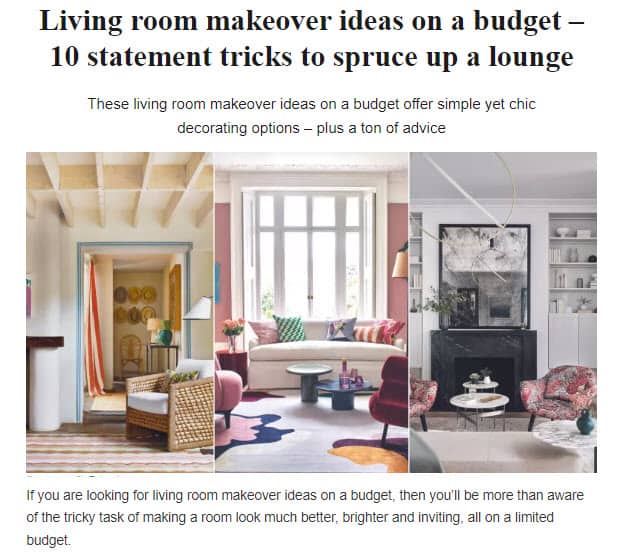
Provide plenty of before-and-after photos to give readers a clear sense of the changes that were made. Write about the process, materials, and cost of the makeover and provide detailed tips on how to replicate the look. Include a list of sources for items such as furniture, paint, and decor, so readers can easily find the products themselves.
Shopping Guides
This type of post would review and recommend specific home decor products, such as furniture, lighting, or textiles, and provide advice on where to find them.
Some examples of post titles are:
- “Best Places to Shop for Affordable Artwork”
- “Review: The Perfect Sofa for Small Spaces”

Be honest and objective about the products you’re reviewing, highlighting both their positive and negative attributes. Be sure to include plenty of photos, and provide information about price, availability, and warranty or return policies. Add a buyer’s guide or a list of features and options to consider when shopping for similar products.
Design & Color Trends
This type of post would explore the latest color and design trends in home decor, and offer tips on how to incorporate them into your home.
Some examples of post titles are:
- “The 2025 Color Trend Report: What’s Hot and What’s Not”
- “Design Trend Alert: How to Incorporate the Industrial Look in Your Home”
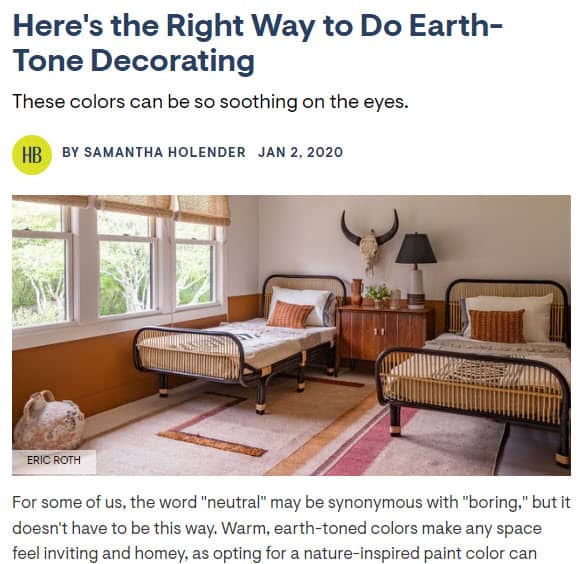
Be aware of the current trends and share relevant examples and images. Provide tips on how readers can incorporate these trends into their own homes, whether through paint colors, furniture choices, or accessories. Additionally, you should include a list of resources, such as paint colors, online stores, or design tips, so readers can easily find the products or ideas you’ve featured.
Home Organization & Storage
This type of post would focus on tips and tricks for keeping your home organized and clutter-free.
Some examples of post titles are:
- “15 Brilliant Ways to Organize Your Closet”
- “Maximizing Small Spaces: Creative Storage Solutions”

Provide practical and easy-to-follow advice that readers can put into practice immediately.
Include before-and-after photos to show the impact of your tips, and consider including a list of resources, such as storage containers, organizational tools, or apps that can help readers keep their homes organized. Consider including tips for different types of spaces, such as closets, bathrooms, kitchens, and living areas.
Home Staging & Home Selling Tips
If your blog is focused on staging and preparing homes for selling, this type of post would advise on how to make your house more attractive to potential buyers.
Some examples of post titles are:
- “5 Simple Tips to Boost Your Home’s Curb Appeal”
- “Staging Your Home on a Budget: How to Make an Impact Without Breaking the Bank”

Provide actionable and budget-friendly advice that can help increase the appeal of a home to potential buyers. Include plenty of photos, and include information about how much time and money the suggested improvements may take. Include resources for finding furniture, decor, or hiring a stager if needed.
Inspiration and Idea Galleries
This post would present a curated collection of images showcasing different styles and themes, providing inspiration for readers looking to update their homes.
Some examples of post titles are:
- “40 Beautiful Bedrooms: Inspiration for Your Master Suite”
- “Rustic Chic: 50 Living Rooms that Perfectly Embody the Trend”
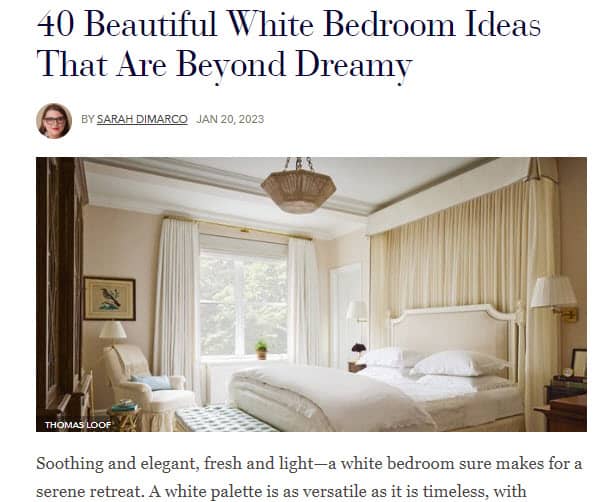
It’s important to curate a visually pleasing and cohesive collection of images, providing a variety of styles and ideas. Include links or credits to the sources where the images came from, and give ideas or context on how the style or theme can be applied in readers’ own homes.
Personal Home Tours
This type of post would offer a tour of the blogger’s own home, showcasing their personal style and providing ideas for readers looking to replicate the look in their own homes.
Some examples are:
- “A Tour of My Cottage-Inspired Home”
- “Inside My Minimalist Apartment: How I Maximize Space and Style”

Provide an in-depth look at your own home, sharing your personal decorating style and insights on how you’ve achieved your desired look. Share where you sourced specific items or how you achieved certain design elements. Include a floor plan or interactive 3D tour, to give readers a better sense of the space.
How-To Posts
One of the most popular types of content in home decor blogs is how-to posts. These are blog posts that show the reader how to do something.
Examples of How-To posts include:
- How to paint a wall
- How to declutter
- How to hang lighting
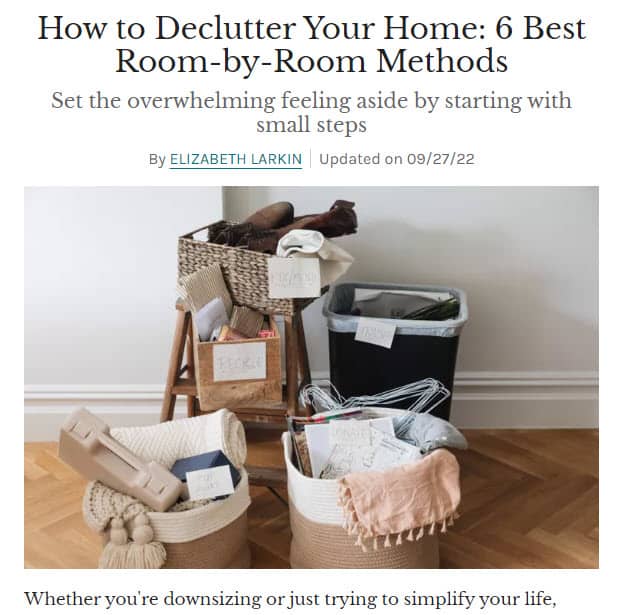
When writing a how-to post, you should follow this general structure:
- Introduction: Introduce the reader to the topic of the blog post and why they should care about it.
- Steps: Break down the process into simple steps. Don’t overwhelm the reader by having too many steps. Try to keep the number of steps below 10.
- Explain the Step: Explain each step in detail. Make sure to include images or videos to accompany the steps.
- Conclusion: Summarize the blog post and provide a call-to-action for the reader.
List Posts
Another popular type of blog post in home decor blogs is list posts. These are blog posts that are typically easy to read and offer value to the reader.
Examples of list posts include:
- 10 Must-Have Tools for Home Improvement
- 7 Home Decor Trends for 2020
- 5 Tips for Organizing Your Home
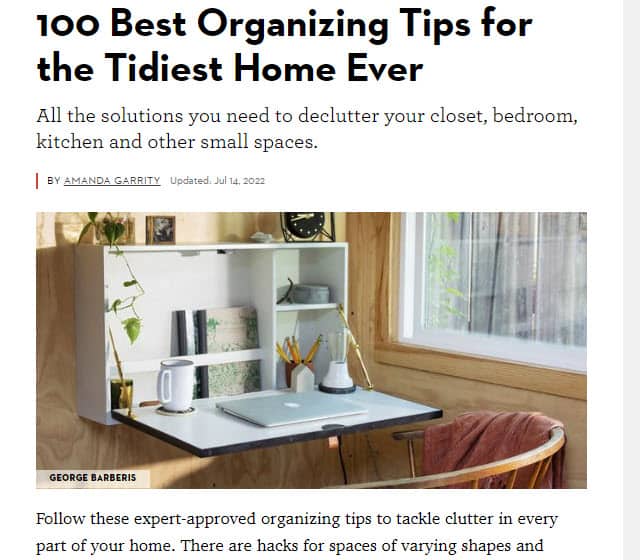
When writing a list post, you should follow this general structure:
- Introduction: Introduce the topic of the blog post and why the reader should care about it.
- List Items: Break down the content into a list format. Each item in the list should be its own paragraph. Include images or videos to accompany each item in the list.
- Conclusion: Summarize the blog post and provide a call-to-action for the reader.
Review Posts
Another type of blog post that is popular in home decor blogs is review posts. These are blog posts where you review a product or service related to your niche.
Examples of review posts include:
- Review of the IKEA EKTORP Sofa
- Review of the Nest Learning Thermostat
- Review of the Philips Hue Smart Bulbs
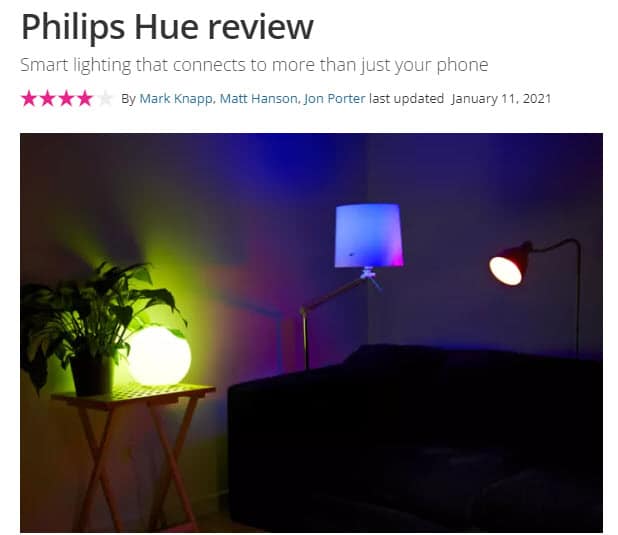
When writing a review post, you should follow this general structure:
- Introduction: Introduce the product or service that you will be reviewing.
- Pros and Cons: List the pros and cons of the product or service.
- Detail Review: Write a detailed review of the product. If there are different aspects to the product, have a different sub-headings for each one. Some examples of sub-headings include price, warranty, durability, features. Include images or videos in your review to make it easier to consume.
- Overall Thoughts: Summarize your thoughts on the product or service.
- Conclusion: Provide a call-to-action for the reader.
Round-Up Posts
A round-up post is a blog post where you curate content from other sources on the internet and provide your own thoughts on the subject.
Examples of round-up posts include:
- 10 Best Home Decor Blogs to Follow in 2025
- 5 Ideas for Small Spaces from Design Bloggers
- 7 Tips for Starting a Home Decor Business from Industry Experts
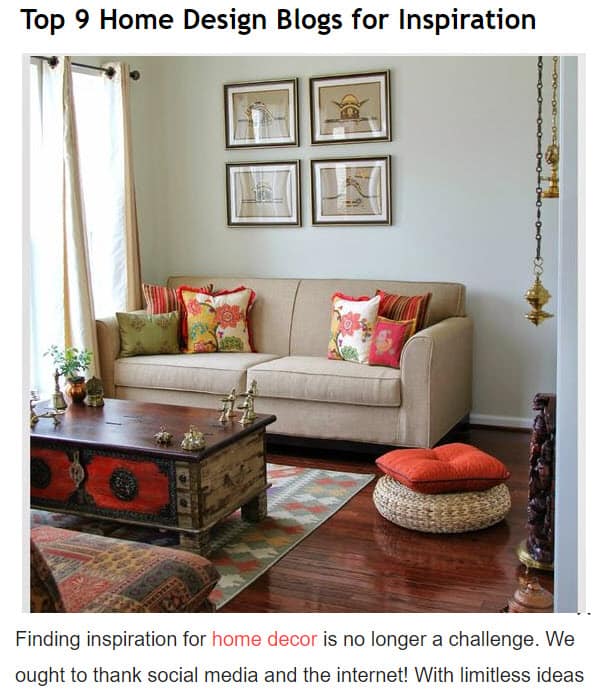
When writing a round-up post, you should follow this general structure:
- Introduction: Introduce the topic of the blog post and why the reader should care about it.
- Curated Content: Find relevant content from other sources on the internet. This can be in the form of blog posts, articles, infographics, or videos. Include a brief summary of each piece of content and provide a link to the original source.
- Conclusion: Summarize the blog post and provide a call-to-action for the reader.
Other Types of Home Decor Blog Posts
There are many other types of home decor blog posts that you can write. Some other examples include:
- Resource list: A blog post that includes a list of resources related to your niche. Examples of resources include websites, books, podcasts, etc.
- Case study: A blog post that breaks down a specific project that you have completed. This could be a home renovation project, a decorating project, etc. Include before and after photos to accompany the blog post.
- Interview: An interview with someone who is an expert in your niche. This could be an interior designer, a home stager, etc.
Write 5x Faster with AI
You can write your new blog post at 5x speed using the AI writing software Jasper. I was able to write over a hundred blog articles in 3 months using Jasper. This blog article you are reading right now was written with the help of Jasper. AI will not only help you write blog posts fast but also with higher quality.
Jasper can write plagiarism-free blog content, articles, social media content, emails, and ad copy. All you have to do is provide a few inputs on what you want and Jasper will do all the hard work of creating the blog content for you. No more writer’s block.
Check out the video below to see Jasper in action:
Try Jasper for free using the links on this page and get 10,000 bonus credits you can use to start writing your first articles.
Once you sign up for Jasper I recommend you spend some time going through the tutorial videos in the Jasper Bootcamp to truly unlock the power of this amazing software.
Check out our guide on How to Write a Blog Post Fast in 15 mins Without Losing Quality for more tips to write fast.
Outsource Writing
If you don’t have the time or energy to write blog posts yourself, you can always outsource the writing to a freelance writer.
When looking for a freelance writer, make sure that they have experience writing in your niche. The best way to find a good freelance writer is by using Fiverr or Upwork.

Once you find a few writers that you like, send them a small test to evaluate the quality of their research and writing. Be sure to include information about your blog, such as the URL, and what type of content you’re looking for.
If you decide to outsource your content, make sure that you edit and proofread the content before you publish it.
4. Add Images
Images are an important part of any blog post, but they are especially important in home decor blogs. After all, home decor is all about visuals!
Make sure to add high-quality, relevant images to your blog posts. The ideal image size for a blog post is 1200x800px. You can use free stock photos or you can hire a professional photographer to take specific photos for your blog.
One of the best things about home decor blogs is that they are personal. Your readers want to see photos of your home, not just professional photos from a catalog. That’s why it’s important to add photos you take to your blog posts.
Not only are your own photos more personal, but they are also likely to be unique since you can take them with a DSLR camera or even your smartphone.
When taking photos for your blog, make sure to use natural lighting and avoid using flash. If you’re photographing a room, try to avoid having too much clutter in the background.
While it’s important to add your own photos to your blog posts, you can also use stock images. There are many stock photo websites available:
Free Options: Pixabay, Pexels, Upsplash
Paid Options: Deposit Photos, Shutterstock, iStock, Getty Images, 123rf.
In addition to adding images to your blog posts, you should also create a Pinterest graphic for each post.
Be sure to use keyword-rich file names and alt tags so that your pins can be found easily in search engines.
Canva is a free online design tool that makes it easy to edit photos and create graphics for your blog.

If you’re looking for high-quality stock images to use in your blog posts, then you should upgrade to Canva Pro. The free version of Canva includes a library of over 1 million stock images, graphics, and fonts.
The best part is that you can use these images for commercial purposes, so you can use them on your blog posts and even create graphics to sell as digital products.
When adding images to your blog posts, you should use the correct file format and compress the images. JPEG is the best file format to use for images that contain a lot of colors, such as photos. PNG is used for graphics and vector art. Compress your images using a free online compressor before you upload them to your blog.
6. Promote Your Home Decor Blog
Once you’ve written and published a blog post, it’s important to promote it so that people can actually read it! There are many ways to promote your blog and here are a few methods:
Search Engine Optimization (SEO)
Search engine optimization (SEO) is the process of improving the visibility of your home decor blog in search engines like Google by making it rank at the top of the search results.
Many factors go into SEO, and it can be a bit confusing to figure out where to start. You can master the more advanced SEO tactics by checking out our SEO Resources.
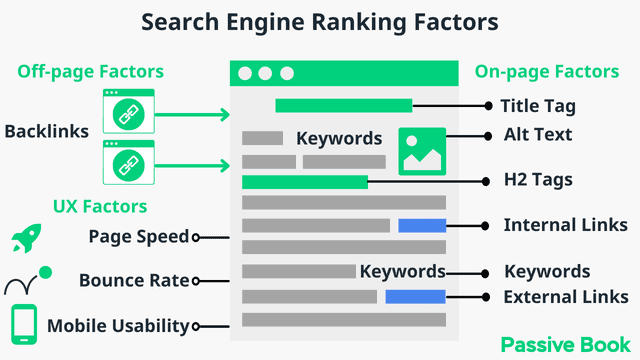
You can ensure you get the basics of SEO right, by completing the recommendations given by the RankMath plugin.
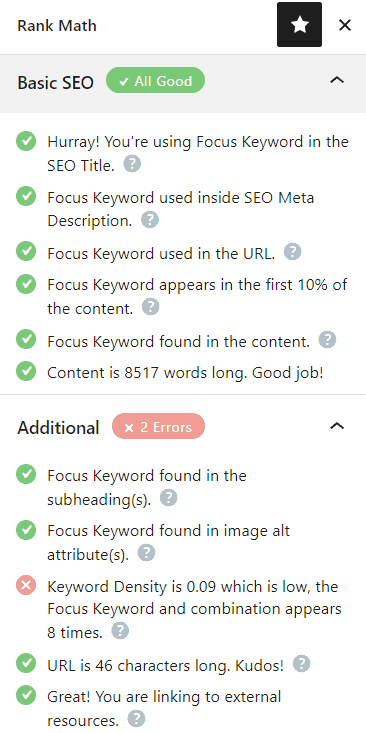
Email Marketing
Email marketing is a great way to promote your blog content and build relationships with your readers.
When you collect emails from your readers, you’re able to contact them directly and let them know when you’ve published a new blog post.
You can also use email marketing to send out automated sequences that introduce new subscribers to your blog, build trust, and encourage them to keep reading.

You can use the Thrive Leads plugin to build opt-in forms to collect email addresses. You can then connect the opt-in form to an email marketing service like Active Campaign to send out the emails.
Check out our Email Marketing resources to learn more.
Social Media Marketing
Social media platforms like Facebook, Twitter, and Instagram are also great ways to promote your blog content.
When you share your content on social media, make sure to use engaging images and descriptions. You should also include a link back to your blog post so that people can read it.
You can use social media to build relationships with other bloggers and influencers in your niche. By interacting with them on social media, you can build a relationship with them which will open opportunities to partner with them.
Guest blogging
Guest blogging is when you write a blog post for another person’s blog.
This is a great way to get exposure to your home decor blog and reach a new audience. You should link to blog posts on your own blog in your guest posts. You can also promote and link back to your blog from your author bio.
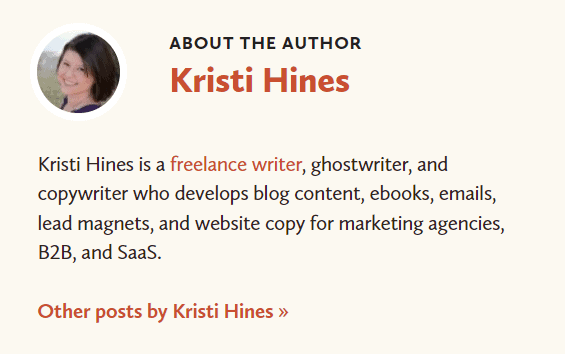
You should also share the guest blog post on your social media channels and email list to drive traffic back to it.
7. Monetize & Make Money
There are many ways to monetize a home decor blog. Here are some of the most common methods:
Advertising
One of the easiest ways to monetize a blog is to advertise. You can do this by signing up for an ad network. The ad network will give you a code that you can place on your blog to show ads. You will get paid when someone views or clicks on the ads on your blog.
To start advertising on your blog, you can sign up for an ad network like Ezoic (they pay more than Google Adsense). When your blog starts getting more than 100,000 page views a month you can monetize with Adthrive.
| Ad Network | Earnings Per 1K Impressions (EPM) | Monthly Traffic Requirement |
|---|---|---|
| Ad Thrive | $13 | 100,000 |
| Ezoic | $3 | 10,000 |
| Media.net | $1 | – |
| Google Adsense | $1 | – |
Affiliate Marketing
Affiliate marketing is when you promote a product or service on your blog and earn a commission when someone buys it.
You need to sign up for the affiliate program and link to the products you are reviewing or recommending in your blog posts using your affiliate links. When someone clicks and makes a purchase, you will earn a commission.
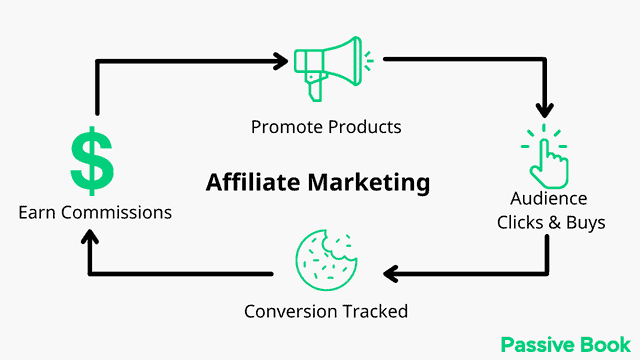
Many companies have an affiliate program that you can sign up for. You can search for affiliate programs of products you are recommending on Google or contact the company directly.
You can also join an affiliate network like ShareASale or join the Amazon Associates program.
Digital Products
Another way to monetize your blog is by selling digital products. These can be eBooks, online courses, templates, or printables.
You can create the digital product yourself or hire someone to do it for you. Once you have the digital product, you can sell it on your blog.
You can use Teachable if you want to sell video courses. Your students will have a dedicated course members area and a community system to ask questions and interact with each other. If you only want to sell eBooks, you can use SendOwl which lets you sell your digital products and eBooks for free.
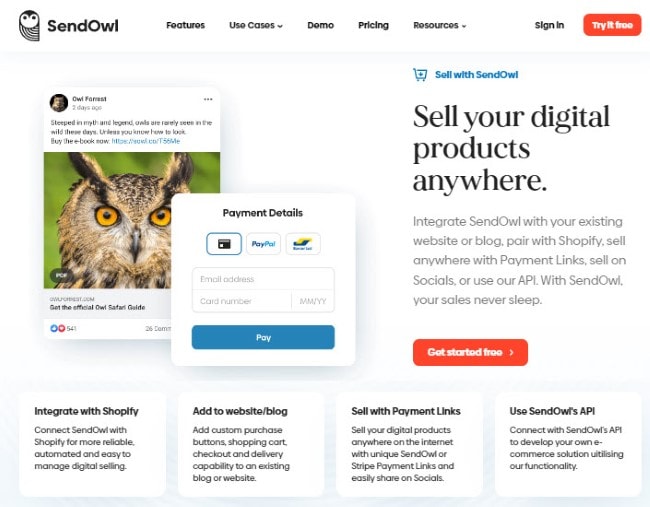
Sell Services
When you start your blog it can also be a great way to attract potential clients. If you have a service that you offer, like design services, home staging, or interior design, you can sell it on your blog. You can create a page on your blog that outlines the services you offer and how much they cost.
You can then link to this page in your blog posts or your sidebars. When someone is interested in your services, they can contact you to inquire about it.
Physical Products
If you sell physical products, like furniture or home decor, you can sell them on your blog. You can create a page on your blog that outlines the products you sell and how much they cost. You can use an ecommerce plugin like Woocommerce to sell products on your blog. You can also sell it on Etsy.
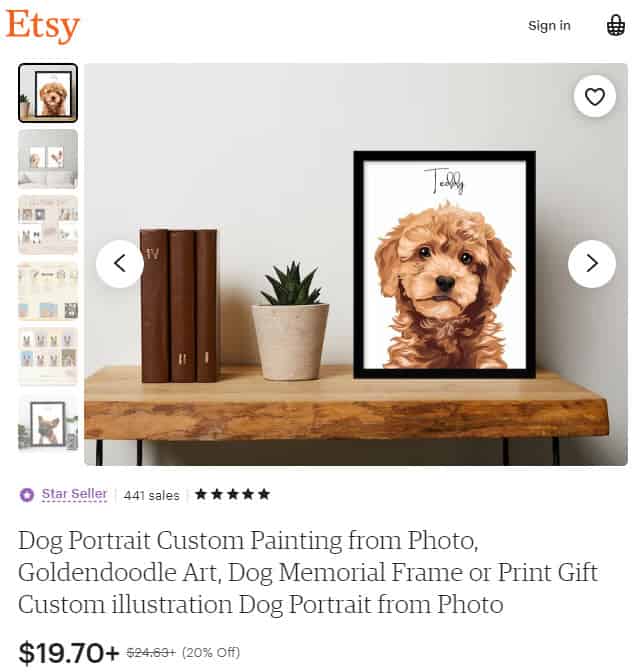
Sponsored Posts
In a sponsored post a company pays you to write a review or mention their product on your blog.
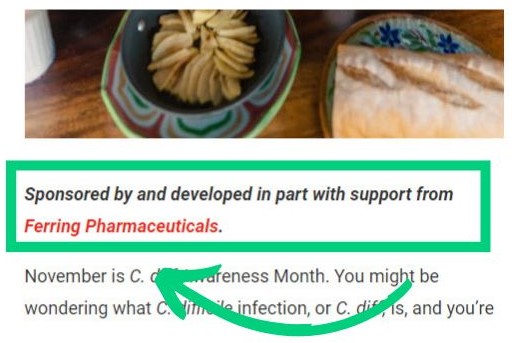
This is a great way to monetize your blog if you have a large following. You should only accept sponsored post opportunities from companies that are relevant to your niche.
To find sponsored post opportunities, you can contact companies directly or join a program like IZEA.
FAQ
Here are a few frequently asked questions:
Do home decor blogs make money?
Yes, home decor blogs can make money through various monetization methods such as advertising, affiliate marketing, digital products, services, and physical product sales.
Can you start a home decor blog for free?
Yes, you can start a home decor blog for free. However, it is not recommended as it will be harder to monetize and grow your blog.
Is starting a home decor blog worth it?
Starting a home decor blog can be worth it if you are passionate about the topic and are willing to put in the work to grow and monetize your blog.
Do I need a degree to start a home decor blog?
No, you do not need a degree to start a home decor blog. However, having a degree or experience in the field of home decoration can give you an edge over the competition.
Do I need to be a professional decorator to start a home decor blog?
No, you do not need to be a professional decorator to start a home decor blog. However, it can help you stand out from other bloggers in the same niche if you have experience or training in the field of home decoration.
How often should I post on my home decor blog?
How often you post on your home decor blog depends on how much time you have to dedicate to writing and promoting your blog. You will need 100 blog posts before your blog starts to get any traction. So try to at least write one blog post per week. Just make sure that you are posting quality content that your readers will enjoy and find helpful.
Do I need to live in a nice house to start a home decor blog?
No, you do not need to live in a nice house to start a home decor blog. However, it can help you get started faster if you have a well-decorated and stylish home.
Do I need expensive furniture to start a home decor blog?
No, you do not need expensive furniture to start a home decor blog. You can cover furniture and home decor items of other homes or even use stock photos.
Do I need to take professional photos for my home decor blog?
No, you do not need to take professional photos for your home decor blog. You can get started with a smartphone camera.
What are some tips for taking great photos for my home decor blog?
Some tips for taking great photos for your home decor blog include using natural lighting, using a tripod, and editing your photos.
Do I need to be good at writing to start a home decor blog?
No, you do not need to be good at writing to start a home decor blog. You just need to be able to write with proper grammar to start a blog.
What Next?
Starting a home decor blog can be a lucrative and fun way to share your passion for home decoration with the world. In this guide, we have covered everything you need to know about how to start a home decor blog, from choosing a niche to monetization methods.
We hope you find this information helpful as you set up your new blog. If you have any questions, please leave a comment below and we will help you out.
Have you started your home decor blog yet? What type of home decor blog are you going to start? Let us know in the comments.
Share this post with your friends & followers:
